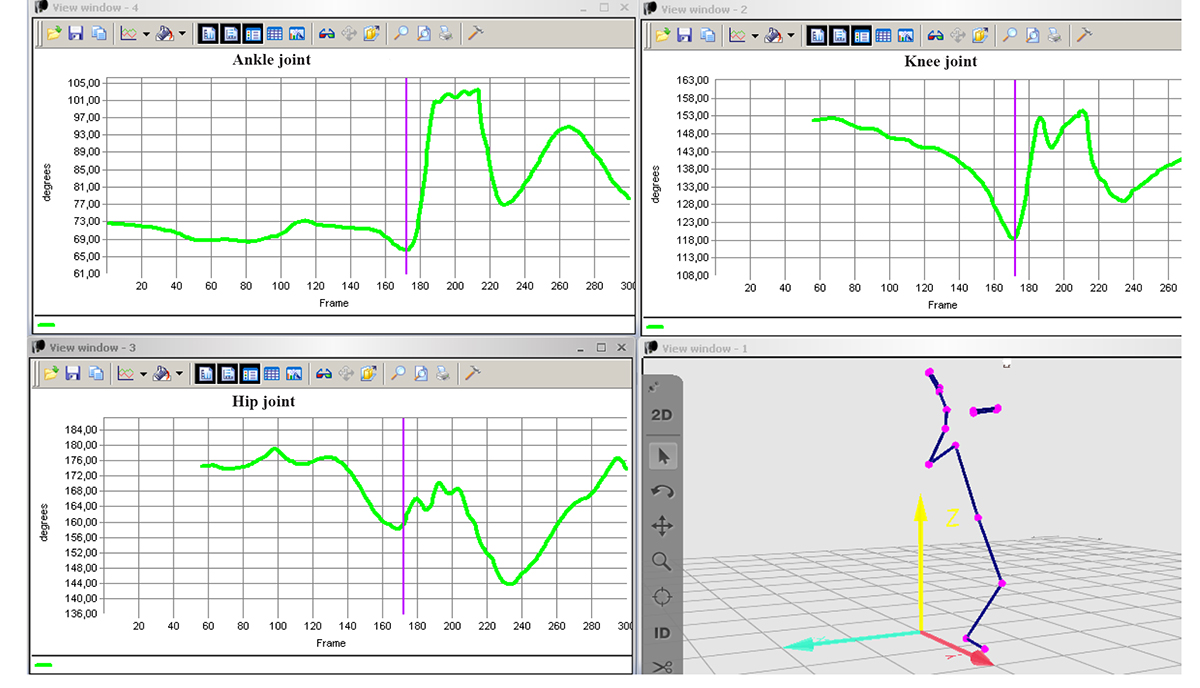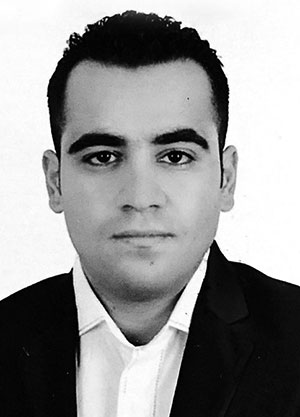Leg extension biomechanism during badminton forehand «smash» and jump smash
Фотографии:
ˑ:
Postgraduate student M. Tashtarian
Dr.Hab., Professor A.A. Shalmanov
Ph.D., Associate Professor E.E. Zhigun
Russian State University of Physical Culture, Sport, Youth and Tourism (GTSOLIFK), Moscow
Keywords: badminton, biomechanics, smash, leg extension, knee joint, hip joint, ankle joint, angular speed.
Introduction
Every movement in modern sport games is normally performed at high speed. In the variety of attacking shots in the modern badminton techniques, the overhead smash shot was subject to study that may be performed in forehand and backhand technique. This power shot is made in the final stage of the attacking shot sequence to “kill off” a point in the tactical combination (that is a mix of game actions) [1]. As reported by Tsai C.L. et al, maximum speeds of the shuttle in the forehand smash shot were metered to average 76.01 m/s [3]. Such speeds provide no possibility for an objective study based on visual expert valuations of the different elements of he shot sequence performed by highly skilled badminton players. It is for this reason that a high priority in such studies is being given to the movement biomechanics analysis of the badminton techniques using modern biomechanics-metering hardware and software tools. Research data and analysis to explore the advanced motor sequences of the top player’s body segments and the relevant leg extension biomechanics in the badminton overhead smash shot performance technique are in high demand by the badminton coaching community that may find these data and analysis helpful in their efforts to improve the junior players’ training process. It should be mentioned that our analysis and overviews of the available research and methodology literature show that biomechanics of badminton shooting technique have never been subject to serious studies in the national sport science.
The purpose of the study was to explore the leg extension biomechanics in the badminton forehand smash shot performance sequence for the standing smash shot technique versus the jumping shot technique with an emphasis on the differences of both of the techniques.
Materials and methods
For studies of the leg extension kinematics in the forehand smash shot sequence, we used the “Qualisys” HSU (Hardware and Software Unit) with QualisysTrackManager (QTM ) application software. The QTM toolkit was used for the input video data capturing using eight high-speed “Oqus” video cameras of the 3rd model. Video shooting frequency was set at 200 Hz. Body segment movement sequences were tracked using passive markers fixed on the body parts of special interest for the study [2]. It was the lateral parts of the joint axes that were mostly marked for the purposes of our study.
Having collected the shot biomechanics tracking video captures, we used the QTM application software tools to compute the linear kinematic profiles of the selected reference points and produce a multi-segmental model of the human body intended to compute the relevant angular movement indicators.
The laboratory tests were performed at the Biomechanics Laboratory of the Sport Research Institute under Russian State University of Physical Culture, Sport, Youth and Tourism (GTSOLIFK), Moscow. 5 highly skilled men badminton players of 24 to 32 years of age qualified Candidate for Master of Sport (3 players) and Masters of Sport (2 players) were tested. The subject athletes were 168 to 182 cm tall with their body weights varying within the range of 65 to 91 kilograms. Every tested athlete was required to perform two forehand overhead smash shots: stand smash and jump smash. Shutter for the shots was thrown up by the test assistant. The shots were made for maximum power to generate maximum speed of the shutter. Every type of shot was performed five times, with only the best of five attempts (when the racket centre speed reached the peak value) being fixed for analysis. Prior to the biomechanics test the subject athletes did warm-up exercises and performed try shots. The following reference points of the body and racket were marked for the tests to read the linear and angular indicators of the shot: centre of gravity (CG) of the racket, hip joint, knee joint, ankle joint and the instep (metatarsus).
Study results and discussion
According to our analysis of the leg extension biomechanics in the ground push-off movement when the forehand overhead smash shot was performed, the shot sequence kinematics may be broken down into the following three basic components or sequential regularities: (1) optimal pattern of the leg flexion in the knee joints; followed by (2) sequential extension of the leg joints (from proximal to distal); and (3) multi-directional movements in the hip and knee joints (Figure 1 hereunder).

Figure 1. Joint angle variation curves for the ankle joint, knee joint and hip joint in the standing overhead forehand smash shot sequence (note that the vertical violet line marks the knee joint maximum extension point):
It may be pertinent to note that the above sequential regularities are typical for every jump exercise dominated by the ground push-off leg movements [2].
The comparative analysis of the leg joint angular kinematics for the standing forehand smash sequence versus the jumping forehand smash sequence showed that the leg-to-ground contract kinematics of the motor sequences in the lower leg segments on the whole and the sub-squatting movement in particular are notably different.
The analysшs showed that the standing shot requires shorter range of the sub-squatting movement than that in the jump shot; as verified by the maximum flexion angles of the knee and hip joints (of the standing shot) estimated at 122.6±16.2о and 148.8±1.22о, respectively; and that of the jump shot making up 103.9±4.33о and 115.3±6.18о, respectively. These differences were found to be statistically meaningful with p < 0.05.
It should be further mentioned that the knee and hip joint extension sequences were opposite for the standing forehand smash sequence versus the jumping forehand smash sequence, since extended first in the standing shot sequence are the knee joints followed by the hip joint extension movements. The sequence time from the knee joint extension startup point to the racket CG (centre of gravity) maximum speed time point was found to equal 0.393±0.101 s; and the time from the hip joint extension startup point to the same racket speed point was estimated at 0.242±0.143 s (with p<0.05). It should be mentioned in this context that this time interval (averaging 0.151 s) is associated with multi-directional movements in the knee and hip joints. As far as the ankle joints are concerned, no distinct regularities were found in their activation sequences.
In case of the jumping forehand smash sequence, the ground push-off movement was found to start from the hip joint extension followed (after certain time) by the knee joint extension movement. The sequence time from the right hip joint extension startup point to the racket CG maximum speed time point was found to equal 0.790±0.218 s; and the same time for the knee joint made up 0.718±0.153 s (p<0.05); that means that the knee joint extension startup point comes on average 0.072 s later than that of the hip joints. The ankle joint extension startup point was found to show different individual variation patterns for different athletes.
The similar sequential regularities were found by the study in the angular speed variation rates for the leg joint movements.
In case of the standing forehand smash sequence, the maximum angular speed time point of the right-leg knee joint extension in the ground push-off sequence comes notably earlier than that of the hip joint, with the relevant maximum speed time points being fixed at 0.243±0.148 s and 0.069±0.010 s (p<0.05), respectively. To put it in other words, the maximum angular speed time point of the hip joint extension sequence comes on average 0.174 s later, that than of the knee joint.
In case of the jumping forehand smash sequence, the maximum angular speed time point achievement pattern in the ground push-off sequence is opposite: coming first is the maximum angular speed point of the hip joint (time mark is 0.521±0.159 s) followed by that of the knee joint (time mark is 0.480±0.187 s). The time lag in between these speed maximums was found to average 0.041 s (p<0.05).
The ankle joint maximum angular speed time points showed different individual variations for different athletes, and no regularities could be found in them.
Conclusion
The knee/hip joint extension kinematics for the standing forehand smash sequence versus the jumping forehand smash sequence were found to be opposite; since extended first in the standing shot sequence are the knee joints followed by the hip joint extension movement; whilst in the jump shot sequence, the joint extension movement starts from the hip joints. The similar regularities were found for the maximum angular speed time points of the hip joints and knee joints. In case of the standing forehand smash sequence, the maximum angular speed time point of the right-leg knee joint extension comes notably earlier than that of the hip joint; whilst in the jumping forehand smash sequence, the maximum angular speed time point starts from the hip joint followed by the knee joint extension movement. The regularities revealed by the study may be indicative of the need in different training methods to be applied in the process of these badminton shot sequences being mastered.
Our follow-up studies will be designed to explore the play-hand biomechanics in the standing forehand smash sequence versus the jumping forehand smash sequence and the interactions of the relevant body segments in the racket CG acceleration sequences of the badminton smash shots.
References
- Smirnov, Yu.N. Badminton: uchebnik dlya institutov fizicheskoy kul'tury (Badminton: Textbook for institutes of physical culture) / Yu.N. Smirnov. – Moscow: Fizkul'tura i sport, 1987. – 323 P.
- Shalmanov, Al.A., Shalmanov Al.A. Osnovnye mekhanizmy vzaimodeystviya s oporoy v pryzhkovykh uprazhneniyakh: metod. rekom. dlya slushateley Vysshey shkoly trenerov, fakul'tetov usovershenstvovaniya i povysheniya kvalifikatsii (Main mechanisms of interaction with support in jumping exercises: method. recom. for students of higher school of trainers, faculties of advanced training). – Moscow, 1990. – 48 P.
- Tsai, C.L. Biomechanical analysis of differences in badminton smash and jump smash / Tsai C.L., Shaw-Shiun Chang, Chenfu Huang // 16 international symposium on biomechanics in sport. – Konstanz, 1998. – Vol. 36. – P. 184–191.
Corresponding author: masoudtashtarian@yahoo.com


